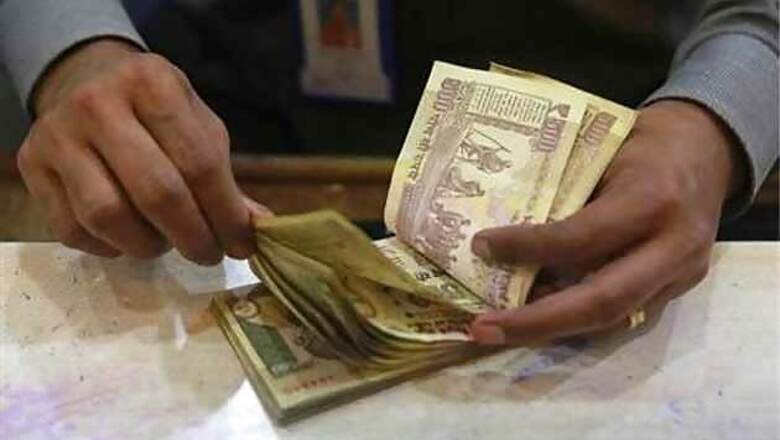
views
Mumbai: The rupee plunged to a record low on Wednesday on heavy dollar demand from importers as traders fretted over mixed signals from the Reserve Bank of India (RBI) over its efforts to prop up the currency without choking off economic growth.
The rupee fell 2 per cent to a record low of 64.5450 to the dollar despite what traders said was sporadic central bank intervention in both the spot and forward markets.
Measures by the RBI late on Tuesday to support longer-dated debt sent prices of beaten-down bonds sharply higher but also led traders to question the central bank's resolve in defending the currency.
Since mid-July, the RBI has taken steps to tighten cash conditions, which have failed to support the rupee but sent bond yields surging, posing a fresh threat to an economy that grew at a decade-low 5 per cent in 2012-2013.
"Currency market and participants may consider it as a reversal of RBI liquidity tightening measures to prevent currency volatility. Thus some pressure on currency may re-emerge," said Anjali Verma, economist at PhillipCapital.
With a record high current account deficit at 4.8 per cent of GDP, India is especially vulnerable to funds moving away from emerging markets in anticipation of a winding back of the U.S. Federal Reserve's stimulus programme. Traders were looking ahead for clues from Fed minutes to be released later on Wednesday.
Deutsche Bank said in a note on Wednesday that the rupee could slide to 70 in a month or so, although some revival is expected by the end of the year.
The central bank's move to ease cash conditions after tightening them in July to support the rupee highlights the growing costs to the economy of stabilising the currency.
"The bearishness seen across markets is largely a reflection of the fact that there is no quick fix solution to arrest the rupee fall," said Shakti Satapathy, fixed income strategist at AK Capital.
The partially convertible rupee closed at 64.11/12 per dollar, down 1.3 per cent on the day, as importers led by oil refiners bought dollars. The 10-year bond yield closed down 49 basis points (bps) at 8.41 per cent, its biggest single-day gain since mid-March 2009.
The yield on the benchmark 10-year bond earlier tumbled as much as 69 bps to 8.21 percent as its price rose.
The BSE Sensex closed down 1.9 per cent as the falling rupee dented investor sentiment.
Bond yields are up 86 bps since the RBI first started tightening market cash conditions in mid-July by raising short-term rates to keep rupee speculators at bay, pushing up the cost of credit for corporate borrowers. Still, the rupee is down 6.7 percent since then.
The RBI said late on Tuesday it will buy Rs 80 billion bonds on Friday and will pare down its cash management bill sales as its target of pushing up the overnight rate to the central bank's emergency funding rate of 10.25 percent had been achieved.
The RBI relaxed rules on mandatory bond holdings for banks, known as the statutory liquidity ratio, which will help protect lenders from large mark-to-market losses. While banks had previously been asked to cut their hold-to-maturity bond holdings gradually to 23 percent of deposits, the RBI on Tuesday allowed banks to retain them at 24.5 per cent of deposits.
"At the moment markets are definitely left guessing about the RBI's intention," said Upasna Bhardwaj, economist at ING Vysya Bank.


















Comments
0 comment